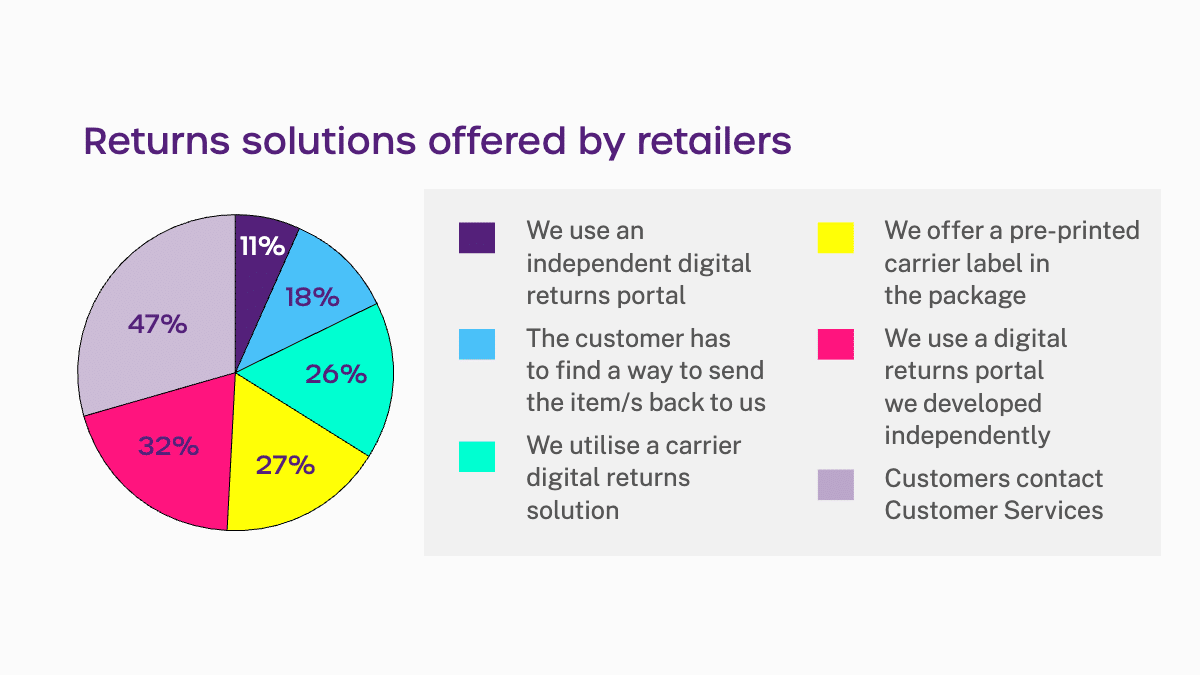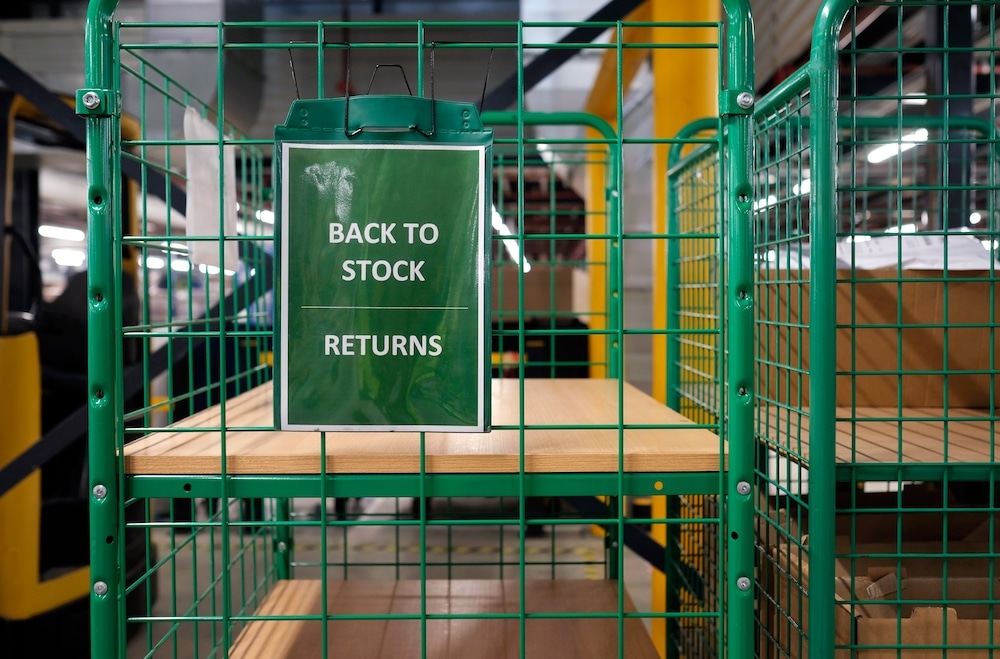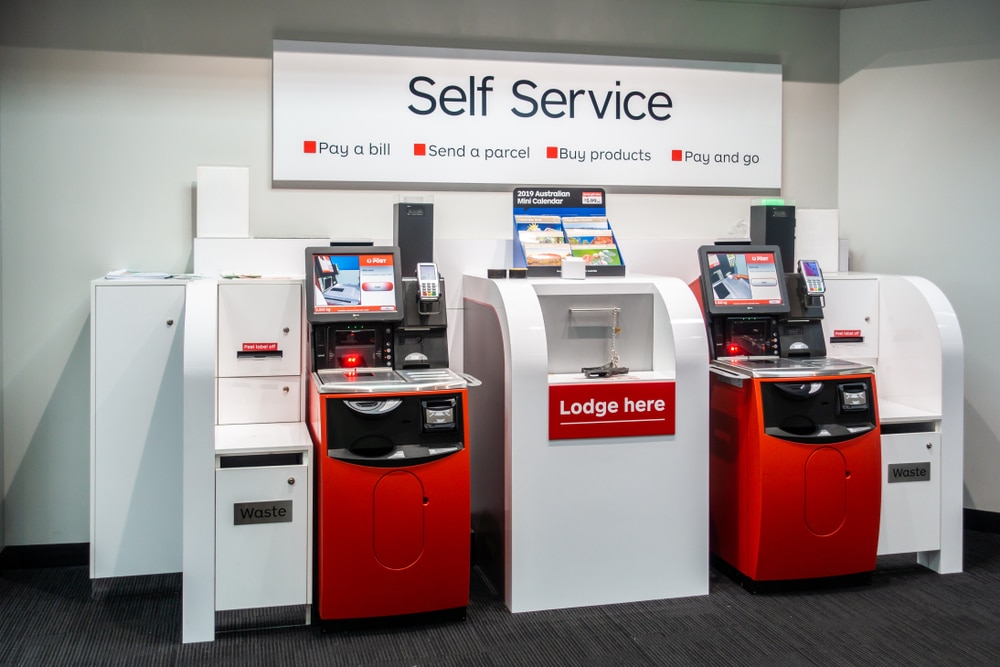Insight / Blog
5 ways to digitise your returns process and increase profitability

Summary: Discover the 5 easy ways to digitise your returns process for better returns efficiency and ROI.
Returns are a core part of ecommerce. Customers will order the wrong items, either on purpose or by accident. It happens and will continue to happen – as long as ecommerce exists, so will returns.
In my opinion, returns are the biggest issue in ecommerce, especially as costs continue to rise and return rates stay sky-high. However, returns are also the biggest opportunity for both retailers and carriers. By digitising the returns process and implementing better returns strategies, retailers can cut costs, get stock back in inventory faster, and ultimately increase profitability, without sacrificing customer experience.
Returns will always need to happen. However, the way returns are managed is the key to cutting costs and increasing profit margins. It’s time for retailers to move away from a customer experience at-all-costs mentality to providing returns solutions that deliver both customer experience and profitability.
As I explored at Leaders In Logistics, there are 5 easy ways to get started digitising your returns process to unlock better returns efficiency and ROI. You can watch the full talk here, or jump straight in with my 5 ways to digitise your returns process and increase profitability.
1. Implement a digital returns journey
First and foremost, retailers need a digital journey through which consumers can start the returns process. This is the absolute essential for digitising the returns process. This is step 1, and without it, you won’t be able to complete 2-5 of the 5 ways to digitise returns.
When digitising returns, retailers need integrated solutions that connect to order data systems. This will allow consumers to select the exact item they want to return and select why they are returning it in one, easy and intuitive journey. For retailers, this ensures that insights on what items are being returned, by who, and why are being gathered, which will become the basis of making strategic decisions or implementing rules as we outline in the later steps.
Digital returns portals also enable a better customer experience for initiating returns with an intuitive online journey, rather than outdated methods like contacting customer services. Our returns report found that contacting customer services remains the most common returns initiation method, used by 47% of merchants.
Using a digital portal will free up resources and staff availability, providing immediate cost-saving benefits compared to relying on customer service teams. For retailers that are putting physical returns shipping labels in packages, (used by 27% of surveyed retailers), digital returns will reduce printing costs and increase sustainability by not including labels that will ultimately go to waste. In addition, it will also provide greater control over what returns are coming in and allow them to reinforce their policy at the point of initiation, rather than accepting all returns with the label – regardless of item type or how much time has passed since the order date.

2023 Returns: The role of parcel carriers and posts
2. Implement returns rules
To prevent unwanted returns from coming back, retailers should implement rules at both the item and customer levels. This can include bans on items that cannot be resold, such as underwear, perishable items, or opened DVDs or games. By doing so, retailers can stop outside-of-policy returns, such as those after 30 days, from coming back through the chain, which saves on shipping and waste costs on items that cannot be resold.
We previously explored how ASOS suffered a £100m loss from just 6% of its customers abusing their returns policy. ASOS provides a great example of how not every consumer abuses return systems, but the small percentage that does cause the majority of return loss.
Using data to implement returns rules is a great way of targeting and prohibiting returns behaviours that are costing retailers the most money, such as late or ineligible returns. By implementing these rules, retailers can prevent unwanted returns and customers from abusing the system, reducing waste and shipping costs, and improving their bottom line.
3. Promote returns in-store
Retailers with brick-and-mortar stores should utilise them for returns. By providing a slick experience in-store, customers are more likely to buy further items and keep coming back, which helps drive the customer’s lifetime value and overall revenue. According to Collect+ data, up to 40% of consumers make an additional purchase once in-store.
For the best returns experience in-store, self-service is a must for retailers. Rather than having consumers queue for over-the-counter services (which adds to store associates’ workload), self-service returns kiosks enable a fully automated journey. Consumers can scan their QR code, attach a label to the parcel, and drop it into the secure box, all of which can be achieved in under 60 seconds. This frees up staff to focus on increasing in-store sales with minimal disruption.

The real benefit of in-store returns is that items are back in the store quickly and ready to be resold, without waiting for the shipment. Even items that need to return to the warehouse can go in bulk from stores, reducing shipping costs.
Next is a great example of using stores in its omnichannel strategy, proposing to keep 195 loss-making stores open to facilitate online demand and returns. The company also incentivises its customers to return items in-store by making in-store returns free, while returns via post incur a £2.50 return fee. Currently, 80% of all returns are handled in-store, despite 65% of Next’s sales being digital.
4. Send items to the right place, using the right service
Using a digital integrated returns portal that connects to retailer data, automated rules can be set up that determine how and where items are shipped back and which shipping service they use.
Not every item needs to go to the same place at the same speed. Some items might need to go to the warehouse, some to the store, some to the supplier, and some to charity. By automating this process, retailers can prioritise items that need to get back in stock quickly and send them faster, helping get inventory back out and ready to be resold as quickly as possible. Items that cannot be resold can be shipped using a slower service, prioritising items that will recapture revenue for retailers.
It’s about making decisions based on each item, rather than treating each return the same way. By automatically making these decisions, retailers can avoid draining customer service resources by manually processing each return that comes in.
5. Pass the data to the right part of your business
Digital returns portals capture various returns data, including what’s coming back, from which customers, and why they are returning items. This data should then be utilised and shared to help empower the business to make stronger, strategic decisions.
For example, retailers can give data to the warehouse so they know what’s coming back and when – allowing them to plan and process them more quickly. This will also help get items back on sale more quickly, giving retailers a higher chance of recapturing the revenue.
Customer service teams can use the returns data insights to respond to queries more quickly, saving staff time and providing a better customer experience. It could also be used to automate refunds based on certain criteria, reducing the number of customers contacting service teams.
Retailers can use returns data to make strategic decisions on an item level. For instance, if there are high levels of returns saying the fit is off, retailers can edit the product listing to address the issue and reduce future returns.
Retailers can’t handle returns alone – carriers need to step up
Retailers still have a long way to go to solve returns problems. Even giants like Amazon haven’t fully cracked it yet. The above methods of digitising returns are easy ways of reducing costs, increasing revenue and ultimately helping to solve returns issues. Not all 5 ways to digitise returns processes need to be implemented at once. Focusing on just one or two can make a powerful difference and significantly improve returns efficiency.
However, most retailers don’t have the resources to action these items themselves – and thus provide carriers and logistics partners an opportunity to step up.
These digital return methods are a brilliant opportunity for carriers to provide value-added services to their offerings, providing solutions to problems retailers are desperately struggling with. This will enable carriers to strengthen relationships, ensure long-term growth, and drive returns volume into their networks.

Topics:
Related articles
Why mastering returns is key to 3PL growth
With returns management systems, 3PLs can turn returns from a burden to a competitive advantage.
7 tactics to drive self-service parcel drop-off adoption
Focusing on parcel kiosks, we explore 7 tactics to encourage customer adoption and drive volume into out-of-home (OOH) delivery networks.
Lessons from a decade in the first and last mile
A decade as Doddle taught us some lessons - and Blue Yonder helps us see what will matter in the next decade.















